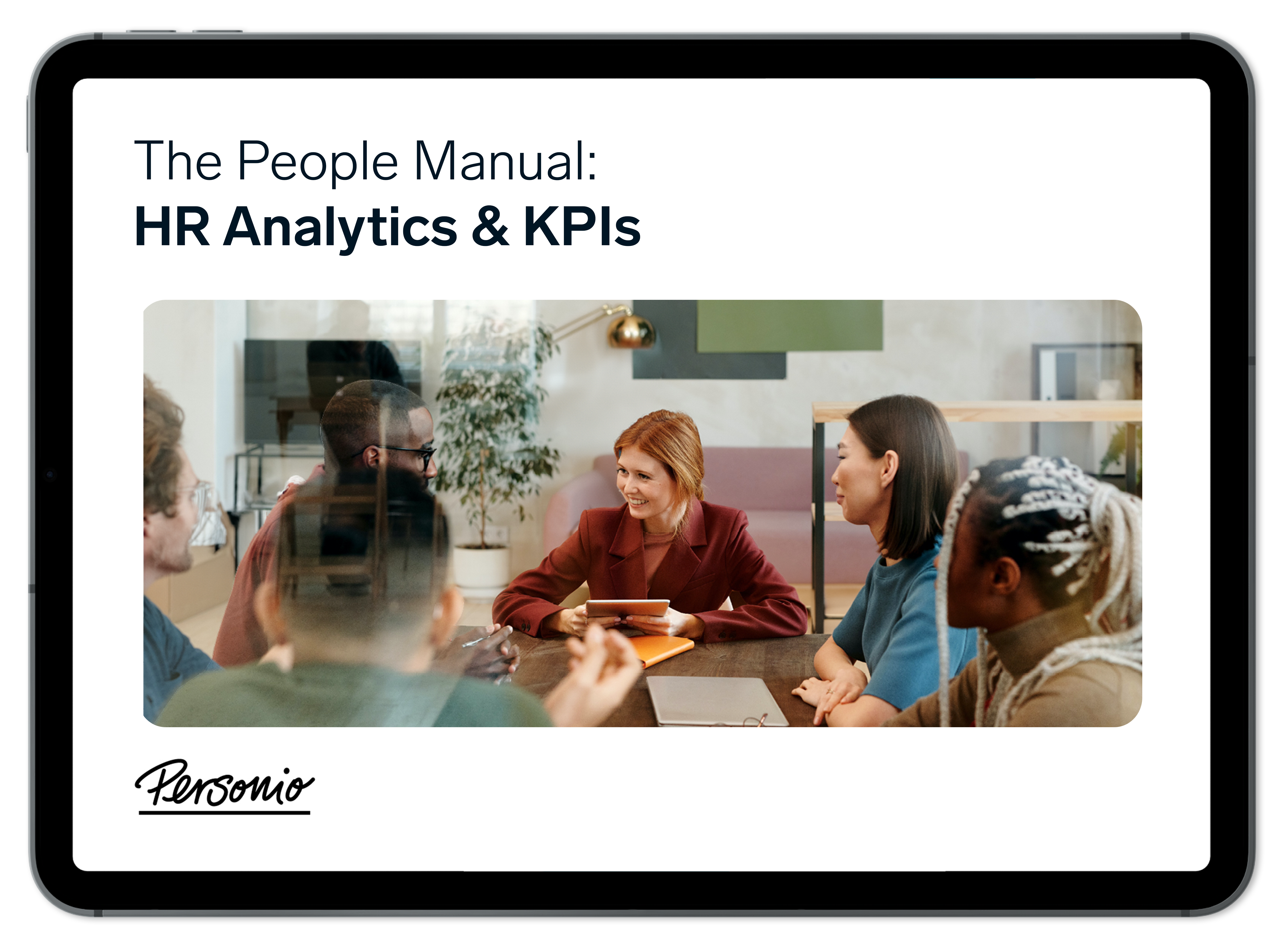
The Personio People Manual
Over a decade of expertise on HR analytics and critical KPIs.
Download your copy today16. April 2024
Harnessing HR data: Four steps to driving business results

Have you ever felt overwhelmed by mountains of HR data, unsure how to translate it into actionable insights? You’re not alone — but we’re here to help.
Below, we will demonstrate a practical, four-step process, using a fictional company called Planeta as an example, to showcase how HR analytics can be used to address real business challenges.
Learn how to find the right KPIs to make data-driven decisions with our HR Analytics Manual.Planeta's problem: High turnover and performance issues
Planeta, a passionate startup dedicated to environmental sustainability, was facing a double whammy: high employee turnover and performance concerns. Their HR department, led by Emma, knew they needed a data-driven approach to tackle these issues. Here, we’ll follow Emma as she puts the four-step process into action.
Step 1: Identify the problem
The first step is defining clear goals to focus your data insights project. To set a goal, ask yourself questions relevant to the issue you most want to address.
For example, based on the problem above, Emma might ask:
Are we providing employees with the tools and resources they need to succeed?
Do employees feel connected to our company’s mission and values?
Who’s leaving, and why?
For Planeta, the answers to these questions pointed to the following goal: identify factors impacting employee performance and engagement, ultimately aiming to reduce turnover.
Step 2: Data collection — Unveiling the pieces of the puzzle
Emma embarked on a data gathering mission. She delved into the company's HRIS (Human Resource Information System), compiling data on:
Employee tenure
Department affiliation
Past performance scores
Next, she analysed the latest employee engagement survey, focusing on questions related to:
Performance
Intention to leave
Then, she reviewed exit interview data to identify common themes and reasons for employee departures.
Not stopping there, Emma went beyond internal data. She explored external job review platforms to understand how candidates, current employees, and former employees perceived Planeta.
Exit interviews are a great way to gather honest feedback. Here's how to prepare one successfully.Step 3: Analyse — Connecting the dots
By combining data points from various sources, fascinating trends emerged. Emma discovered:
A high turnover rate among employees with less than a year at Planeta
40% of recent joiners in Sales & Marketing received low performance ratings
Only 7% of these recent joiners had established goals or development plans with their managers
Digging deeper, Emma found that Sales & Marketing boasted the lowest participation rate in learning and development opportunities. And exit surveys from these departments revealed recurring themes. Employees mentioned:
"Unclear role expectations"
"Lack of manager support"
"Poor work-life balance"
A feeling that their actual role differed significantly from what they were hired for
Step 4: Apply — Putting insights into action
Armed with these insights, Emma presented her findings to key stakeholders across the organisation. Based on her recommendations, targeted interventions were implemented:
Recruiting revamp: The recruiting team revamped job descriptions to accurately reflect the scope and responsibilities of each role, ensuring alignment with what Planeta actually offered.
Manager training: Sales & Marketing managers received in-depth training on the importance of setting goals and providing ongoing performance feedback.
Learning & Development boost: The HR team created a library of relevant development resources specifically tailored to skill development in Sales & Marketing.
Continuous monitoring of key metrics like performance ratings, turnover rates, and engagement scores allowed Emma and her team to assess the impact of these interventions.
Results: Data-driven success
Over a 12-month period, the company witnessed significant improvements:
Performance uptick: Average performance ratings increased, indicating a more productive workforce.
Reduced turnover: Turnover rates decreased by 15%, signifying a positive impact on employee retention.
Engagement boost: Employee engagement scores within Sales & Marketing improved, leading to a more positive work environment and stronger team collaboration.
This example demonstrates how HR teams can tackle performance-draining issues by making good use of the people data at their fingertips.
By following a structured approach like the four-step process above, companies like Planeta can transform data into actionable insights that drive real business results.
Lay the groundwork
Looking to learn more about how to make a real impact in your business with people analytics? You can register for our free course on the Personio Voyager Academy. Sign up here.
Getting your data in one place is critical. A centralised HR software, like Personio, can establish a powerful source of truth for your entire organisation — with the data hygiene to match. Book your demo today.
